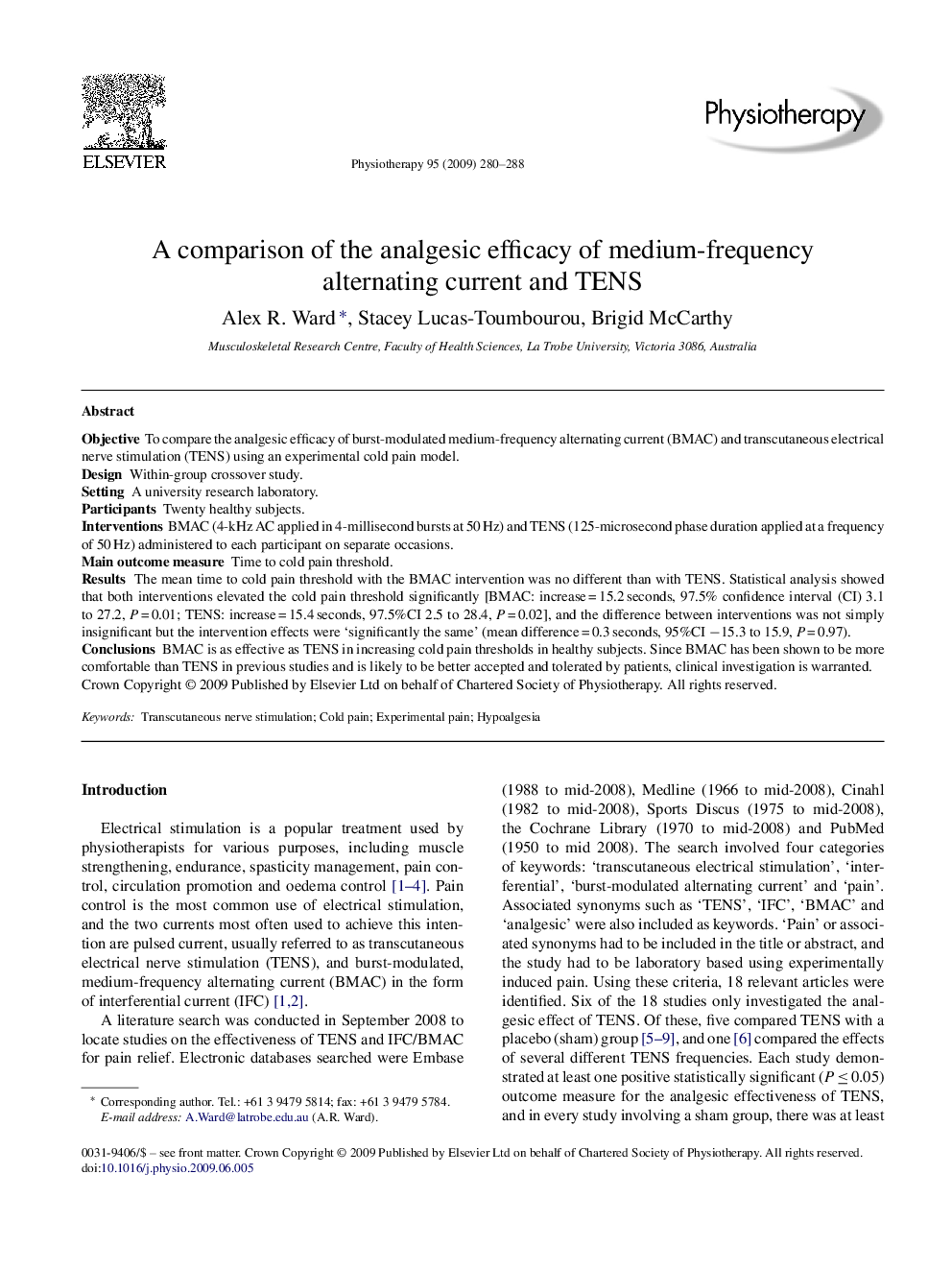| Article ID | Journal | Published Year | Pages | File Type |
|---|---|---|---|---|
| 2627876 | Physiotherapy | 2009 | 9 Pages |
ObjectiveTo compare the analgesic efficacy of burst-modulated medium-frequency alternating current (BMAC) and transcutaneous electrical nerve stimulation (TENS) using an experimental cold pain model.DesignWithin-group crossover study.SettingA university research laboratory.ParticipantsTwenty healthy subjects.InterventionsBMAC (4-kHz AC applied in 4-millisecond bursts at 50 Hz) and TENS (125-microsecond phase duration applied at a frequency of 50 Hz) administered to each participant on separate occasions.Main outcome measureTime to cold pain threshold.ResultsThe mean time to cold pain threshold with the BMAC intervention was no different than with TENS. Statistical analysis showed that both interventions elevated the cold pain threshold significantly [BMAC: increase = 15.2 seconds, 97.5% confidence interval (CI) 3.1 to 27.2, P = 0.01; TENS: increase = 15.4 seconds, 97.5%CI 2.5 to 28.4, P = 0.02], and the difference between interventions was not simply insignificant but the intervention effects were ‘significantly the same’ (mean difference = 0.3 seconds, 95%CI −15.3 to 15.9, P = 0.97).ConclusionsBMAC is as effective as TENS in increasing cold pain thresholds in healthy subjects. Since BMAC has been shown to be more comfortable than TENS in previous studies and is likely to be better accepted and tolerated by patients, clinical investigation is warranted.
